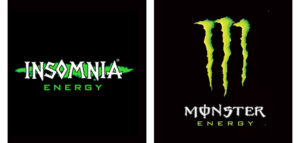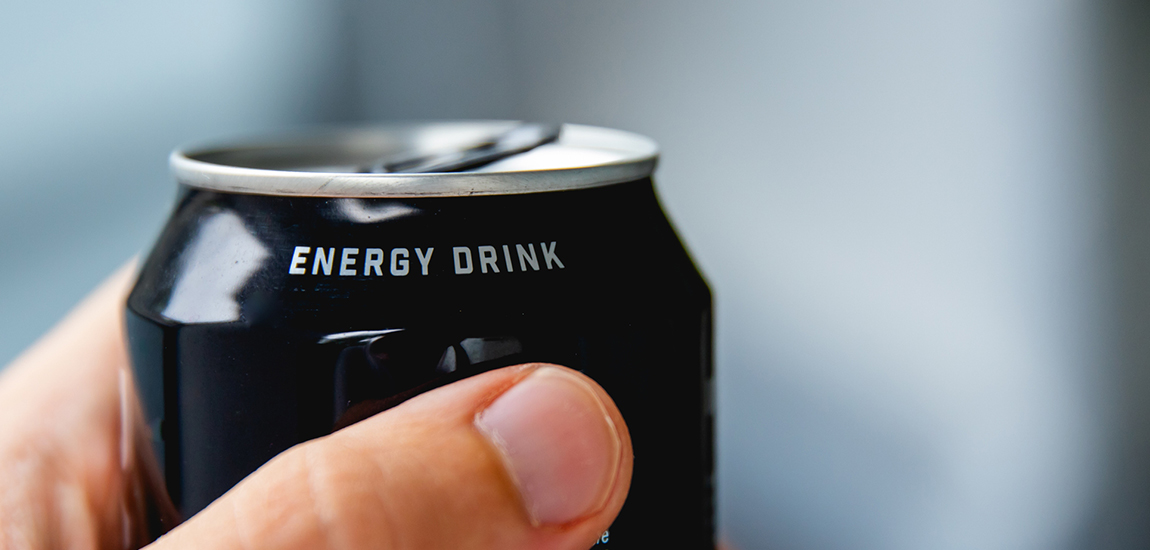Last October 23, the General Court of the European Union refused the figurative trademark registration “Insomnia Energy” on the grounds that the proprietor – BBF Company EOOD – was taking unfair advantage of the reputation of the mark “Monster Energy”, owned by Monster Energy Co.
The conflict arose in December 2020 when Monster Energy Co. filed an application for a declaration of invalidity at the European Union Intellectual Property Office (EUIPO) against the sign “Insomnia Energy” as a figurative European trademark. That mark had been registered on October 9, 2016 by BBF Company EOOD for goods in class 32 (principally fruit-based soft drinks, energy drinks and non-alcoholic beverages).
Monster Energy Co. argued that its earlier figurative trademark – with the same name as that of the company and registered on January 9, 2013 – also covered, among other goods, «non-alcoholic beverages» in the same class.
The invalidity application filed by Monster Energy Co. was based on article 8.5 of the EU Trademark Regulation (EUTMR) and essentially held that BBF’s registration took unfair advantage of its trademark for energy drinks, which occurs when the registered trademark:
“is identical with, or similar to, an earlier trademark, and the goods or services for which it is filed are not similar to those for which the earlier [EU] trademark is registered, where, in the case of an earlier [EU] trademark, it has a reputation in the [EU]; and in the case of an earlier national trademark, the trade mark has a reputation in the Member State concerned, and where the use without due cause of the trademark applied for would take unfair advantage of, or be detrimental to, the distinctive character or the repute of the earlier trade mark.”
In December 2022, EUIPO’s Cancellation Division dismissed the invalidity application filed two years earlier by Monster Energy Co. in its entirety, on the grounds that there was no likelihood of confusion between the marks.
However, in December 2023 EUIPO’s Board of Appeal annulled that decision, finding that such risk did exist and declared the contested mark invalid in its entirety. When comparing the marks, the Fourth Board of Appeal found that in light of the reputation of Monster’s trademark, the differences between the marks were insufficient to rule out a likelihood of confusion or that unfair advantage was being taken of the reputation of the earlier mark. In particular, the Chamber attached particular importance to the similarities between the marks in the exact reproduction of the word element “Energy” (also in terms of its font, color, size and position), as well as the use of the same colors (black, green and white) and the similar stylisation of the word elements “Monster” and “Insomnia”, despite the fact that they were totally different words.
In February 2024, BBF appealed the decision by the EUIPO at the General Court of the European Union (GCEU) on the grounds that (i) the reputation of the earlier mark had not been assessed correctly; (ii) nor the likelihood of confusion, since it had not been borne in mind that the dominant elements of the conflicting marks were “totally different”, with a difference between the signs at issue from a visual, phonetic and conceptual standpoint.
Finally, in its judgment of October 23, the General Court analyzed whether the contested mark came under the prohibition on registration set forth in article 8.5 EUTMR, i.e., whether the trademark “Monster Energy” was well-known and if by using the registered trademark without due cause BBF sought to take unfair advantage of the reputation of the well-known energy drinks mark. In relation to the comparison between both signs the GCEU has held as follows:
- Distinctive and dominant elements: According to EUIPO’s Board of Appeal, the GCEU considers that the appellant based its argument on an incorrect premise, because the differences in the dominant elements of the marks cannot be borne in mind as the only important factor in finding that the marks are not similar. In this regard the Court holds that although the word “energy” has weak distinctive character with regard to the goods at issue (as we have seen, energy drinks), that element will not go unnoticed on account of its size and characteristics and, therefore, must be borne in mind in the comparison.
- Visual, phonetic and conceptual comparison: Both EUIPO’s Board of Appeal and the GCEU consider that the analysis should be based on the overall impression of the marks in view of aspects such as the presence of the common word element ‘energy’, the use of the same colors (black, green and white), the highly similar structure of those marks and the same position of the word elements in each of the marks, which have been decisive in determining the similarity between the conflicting marks, despite the differences in the dominant words “Insomnia” vs “Monster”.
- Reputation of the earlier mark: The GCEU rejects BBF’s claim regarding the lack of objectivity of the evidence provided, highlighting that the Board of Appeal had adequately addressed the evidence submitted and that there was no reason to divert from its findings.
Consequently, in light of the existing circumstances, it transpires from the GCEU’s findings that although it is true that the dominant elements of the marks are important to a certain degree (in this case, (“Monster” / “Insomnia”), this does not mean that they are the only relevant elements that must be borne in mind in the assessment to determine whether or not there is a likelihood of confusion between the marks.
This judgment underscores the importance of how the visual structure, arrangements, colors, font and other decorative elements are still capable of conjuring up a well-known earlier mark, despite the conceptual, phonetic or visual differences.
In short, trademarks must be viewed in their entirety and cannot be broken down into their individual parts to suit the interests of the party concerned, in order to minimize the distinctive impact of the mark overall.






